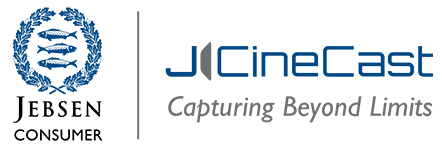The Lens Is An Important Creative Tool To A Cinematographer: An Interview With Director Of Photography Cecile Zhang

Since 2013, Angenieux enjoys a special moment during every Cannes Film Festival – the “Pierre Angénieux ExcelLens in Cinematography” Award. Renowned cinematographers like Roger Deakins and Christopher Doyle are past recipients of this distinguished award. In 2018, Angenieux introduced a special encouragement for young filmmakers and named its first recipient as China’s Cecile Zhang. A post-graduate student of film studies and the creator of many works, Ms. Zhang is a role model for young filmmakers in China.
Angenieux : In the filmmaking process, what role do you play as Director of Photography?
Zhang: From content creation perspective, a Director of Photography is a creator of images. As part of a production team, we have to maintain a good working attitude and be responsible for every image. From a team perspective, a Director of Photography is a close working partner of the director. From a film industry perspective, a Director of Photography’s role is to guarantee the production of the movie.
Angenieux : How important are optics in the filmmaking process?
Zhang: Optical imaging is actually the lens, and the lens is an important tool to a cinematographer. There are coated and uncoated lenses. With coated lenses, the images appear calm and precise as the light is softer. With uncoated lenses, you can create the texture of old films with low contrast and more glare. Every cinematographer has their own habits and sense of aesthetics, and this would directly affect the choice of lens. The style of the production and the filming environment are also important considerations. For example, in very cold climates, it would be best not to choose a handmade lens as the low temperature is likely to cause the focus to shift.
Angenieux : What benefits have zoom lenses brought to the narrative and filming process of a movie? How do fixed focus and zoom lenses help in your work?
Zhang: The filming process also plays a role in a movie; it represents what the director wants to convey. Lenses can ‘speak’ many languages — they can take on the perspective of the audience, the director, or any character in the movie. Different perspectives require different lens language, and zooms offer us more flexibility.
I usually choose a set of prime lens paired with zooms. In many of my work, I like to take over-the-shoulder shots with zooms. Prime lenses tend to produce images where the change in picture rhythm is not as flexible as that of zooms. This is also why many directors prefer to take over-the-shoulder shots with zooms to capture intense motion shots. With the push-in and pull-out, coupled with a track, zooms can achieve a Dolly Zoom effect. It gives cinematographers more options to capture each scene. Take a narrow shooting space with complicated camera movements for example. I would usually use a camera track and zoom lenses, and starting from a slightly wider angle, push into a tighter shot. When filming commercials, because filming schedules tend to be tighter, I would prefer zoom lenses too.
Angenieux : How do Angenieux lenses help you during filming? Is there anything unique about the technology or art of its lenses? How does the brand inspire your work?
Zhang: When I was in school, the first zoom I used was the Angenieux Optimo Style 25-250. It gives a very strong vintage film look.Angenieux ’s uniqueness lies in its compatibility. Whether with Leica, Zeiss, or Cooke lenses, there is always a suitable lens from theAngenieux range to pair with. In my production team, we typically pair the 15-40 and 28-76.
I find that Angenieux lenses are best suited for pieces that need lively shots and greater realism. It gives full play to the lenses’ strength. In June, I shot a documentary that only had a single 15-minute-long scene. I used the Angenieux 28-76 mainly for the over-the-shoulder shot. In another piece of work that I collaborated with Director Liang Huan, as there were two parts in the film, we used two sets of lenses. For one set, we paired Leica prime lenses with Angenieux 45-250; for the other, we used Cooke prime lenses withAngenieux 25-250. Director Liang and I experimented a lot.
Angenieux : How do you determine the quality of Angenieux lenses? What has Angenieux brought to cinematographers in this digital age of filmmaking?
Zhang: Angenieux does a good job with lens distortion and calibration. I like the older Angenieux lenses as they have more character. Previously, Angenieux had produced prime lenses, but later chose to specialise in zoom lenses. This has allowed it to raise its technology levels even more. What Angenieux delivers to cinematographers is the guarantee of high production quality.
Angenieux : How did you adapt to the digitisation of filmmaking? What were your greatest challenges and, in the process, what do you think digitisation has brought to the industry?
Zhang: I am a native digital cinematographer. I’ve used a 16mm film lens before and that was really ancient. Lenses from that time are not as good as they are now; heavy lens breathing. But I feel that, in general, people in this industry enjoy the new and novel. To shoot on film is a challenge for me. Some directors come to me saying that they want to use film, so I have to nod and say that I will give it a shot. This is also good because the exposure techniques that we learnt are applicable to film. On set, I use a light meter, which is a real test of my knowledge. Even with film, the theories should remain the same.
I think the greatest challenge of digitisation is the lack of convergence of processes. Previously, for example, when I used ARRI to shoot in MOV format, it was very simple to do colour correction in post-production. One person could handle the entire process. Now, the equipment by every manufacturer uses different formats. We need to consider the entire workflow process during our planning phase—what format is used for monitoring, what LUT to apply, what format to store the footage, and what hard disk capacity to prepare; during editing, what format do we export in, what platform do we use for colour correction? In such a process, if communication within the team is not seamless, it will affect the quality of the finished work.
Angenieux : In your opinion, what progress does digitisation bring to the cinematic industry?
Zhang: Digitisation has not only changed the cinematic industry, it has also reshaped the way people live. It has broadened people’s vision. With digital filmmaking, the barriers to entry have been lowered. More people can learn about and join the cinematic industry, and the industry is also receiving more attention. For cinematographers, though, expectations are now higher. For example, a director needs a 60-minute long scene. In the film era, perhaps only 1% of cinematographers could achieve that. Now, at least 50% of cinematographers can shoot that scene. If you want to be ahead of the curve and shoot a 90- or even 100-minute long scene, you need even more professional knowledge and techniques.
Also, in the digital age, an increasing number of people regard movies as mass entertainment rather than art. For those who really love movies, and who are serious about making movies, this can be hurtful. In the 1980s and 1990s, adults brought children to the cinema so they could learn about art and culture. Now, adults and children alike treat movies as mass entertainment. For art and culture, they would visit a museum instead. In a way, you could say that movies have lost some of its standing in the world of art.
Angenieux : Has digitisation affected the role of a cinematographer in any way?
Zhang: On one hand, it has made work easier as tasks like DIT and colour correction are now separated. But, for cinematographers to enjoy a long career in the industry and maintain their authority over art and technique, they need to upgrade their professional knowledge and people skills. In the digital age, directors can view footage in real time. If there are any technical issues, cinematographers also need to resolve them in real time. To a cinematographer, it’s not all about pretty pictures. For example, in the movie Kaili Blues, the lens language was not systematic. If it were me, I would have chosen to shoot the opening scenes in a rougher way to connect with the long-range scene later in order to form a complete system. Many cinematographers would have faced a similar situation where they are mesmerised by the beauty of the shot on set only to realise that it was not the case during editing. Beauty is relative; there is no benchmark. I feel that many cinematographers have a very commercial definition of beauty. With masters like Christopher Doyle and Robby Müller, you won’t find their scenes beautiful, but they are very powerful. That’s why their work continues to be passed down.
Angenieux : What hopes or aspirations do you have for cinematographers and the cinematic industry?
Zhang: In the digital age, the number of people entering the industry is increasing but the number of people who are passionate about movies is actually decreasing. I hope to see more people who are passionate about movies and serious about filmmaking joining the industry. This will raise the standard of the industry. I also hope that movies can be popularised as an art form. I hope people will bring their children to cinema to give them a foundation in the arts, and not purely for entertainment purposes. For myself, I look forward to continue experimenting, to work with people who are passionate about movies, and to produce more great work.


